Discover the Mysteries of Shennongjia: A Journey Through Ancient Chinese Legends
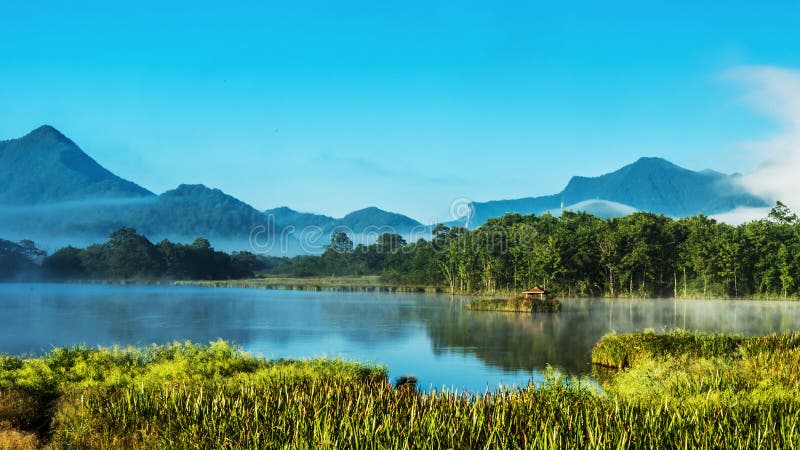
An Essential Guide to Visiting Shennongjia
In This Guide
- An Essential Guide to Visiting Shennongjia
- The Rich History and Legends of Shennongjia
- Main Highlights: What You Absolutely Can’t Miss
- Planning Your Visit: A Practical Guide
- Tickets: Prices, Booking, and Tips
- How to Get There: A Complete Transportation Guide
- Local Cuisine and Accommodation Nearby
- Frequently Asked Questions
- Final Thoughts on Your Trip
Nestled in the heart of Hubei Province, Shennongjia is a hidden gem waiting to be explored by those seeking a blend of natural beauty, rich history, and cultural significance. This enchanting region, often referred to as the “Home of the Wild Man,” is not only a sanctuary for diverse wildlife but also a site steeped in legends and ancient traditions.
As you wander through its majestic forests, towering mountains, and serene lakes, you’ll be captivated by the breathtaking landscapes that change with the seasons, offering a kaleidoscope of colors and experiences year-round. Shennongjia is renowned for being the habitat of the elusive golden snub-nosed monkey, whose playful antics are a highlight for many visitors. Additionally, the area’s historical sites, such as the Shennong Altar, pay homage to Chinese culture and mythology, linking the region to the legendary Emperor Shennong, known for his contributions to agriculture and medicine.
Whether you’re a nature enthusiast, an adventurer, or a history buff, Shennongjia provides an array of activities that cater to every type of traveler. Here’s what you need to know to make the most of your visit to this extraordinary destination.
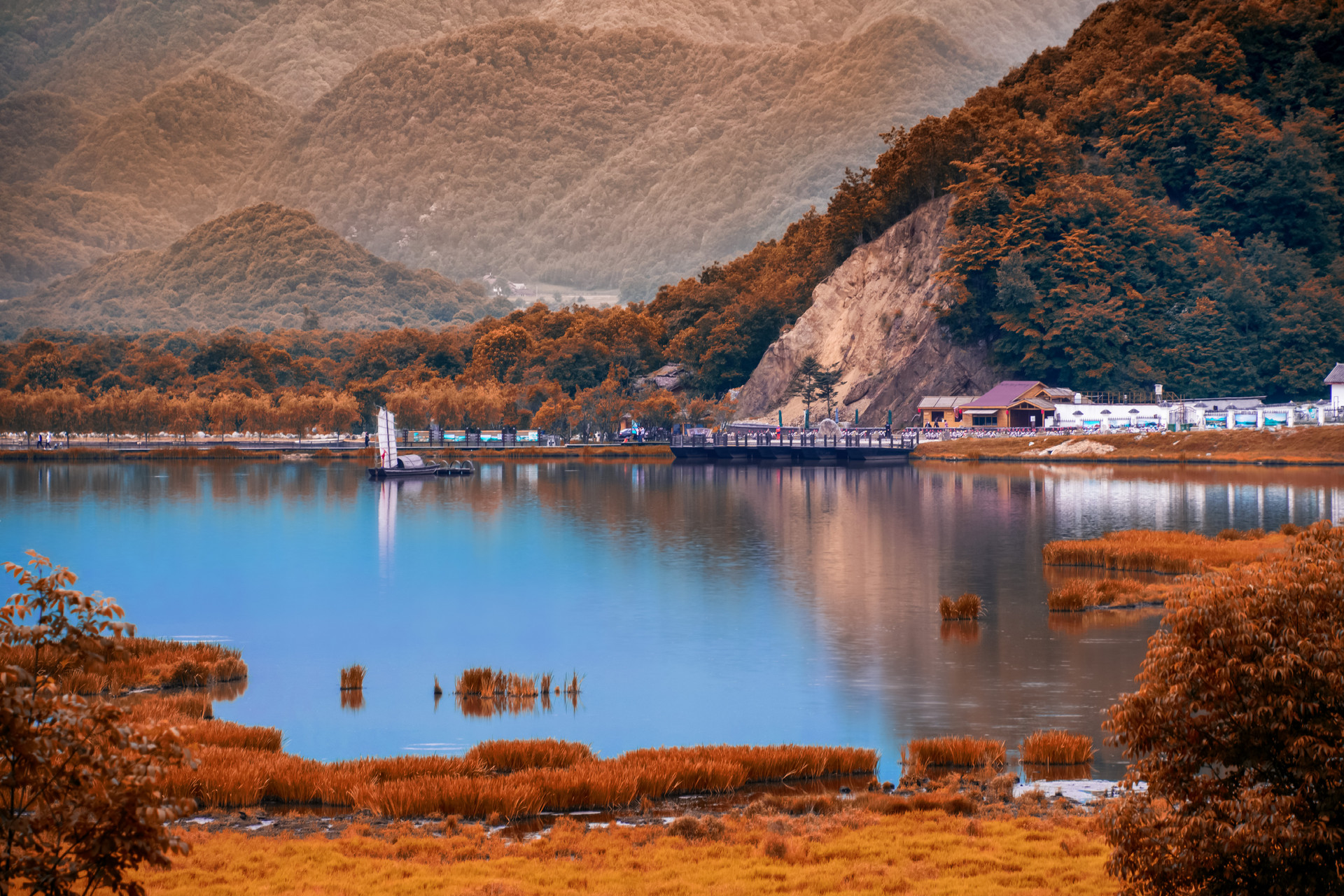
Shennongjia.
What Awaits You in Shennongjia
- Breathtaking Natural Wonders: Explore the Shennongding National Nature Reserve with its stunning vistas and rich biodiversity.
- Cultural Heritage: Visit the Shennong Altar, a revered site that celebrates the historical and cultural significance of the region.
- Adventure Activities: Engage in hiking, skiing, or simply take in the beauty of the Hongping Hualang and Wushan Lake.
- Unique Wildlife Encounters: Witness the charming golden snub-nosed monkeys in their natural habitat.
Prepare to be enchanted by the charms of Shennongjia, where history, nature, and culture converge to create an unforgettable experience.
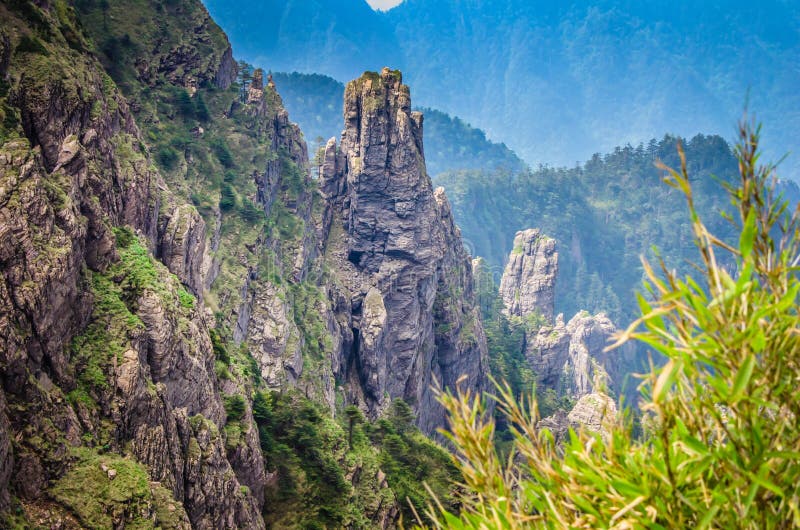
Shennongjia.
The Rich History and Legends of Shennongjia
Nestled in the heart of Hubei Province, Shennongjia is not just a picturesque landscape of mountains and forests; it is a treasure trove of rich history and captivating legends that breathe life into the ancient culture of China. This region carries the weight of myth and historical significance that beckons travelers to delve deeper into its past.
The Legendary Origins
The name “Shennongjia” translates to “the place of Shennong,” commemorating the legendary Emperor Shennong, who is celebrated as one of the Three Sovereigns of ancient China. Known as the “Divine Farmer,” Shennong is credited with introducing agriculture and herbal medicine to the Chinese people. His legendary exploits in the region include the discovery of various medicinal plants, which he tested on himself to determine their effects. Visitors to Shennongjia can explore sites like the Shennong Altar, where it is said he conducted rituals to honor nature and promote agricultural practices.
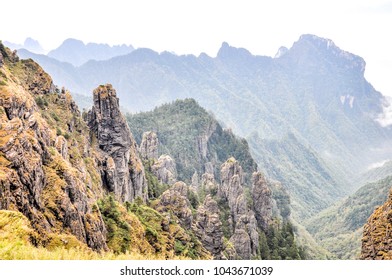
Shennongjia.
The Home of the Wild Man
Shennongjia is often referred to as the “Home of the Wild Man,” a mythical creature akin to the Western Sasquatch or Bigfoot. Local folklore tells of a hairy hominid that roams the dense forests, eluding capture and observation. This creature has intrigued researchers and adventurers alike, leading to various expeditions aimed at uncovering the truth behind the legend. The area’s rugged terrain and dense vegetation provide the perfect cover for such elusive beings, making it a hotspot for cryptozoology enthusiasts who seek to explore the intersection of myth and reality.
Cultural Heritage and Historical Significance
Beyond its legendary allure, Shennongjia is steeped in cultural heritage. The region is home to numerous historic sites, including the Tianyan Tourism Area, which showcases the architectural marvels and cultural relics of ancient China. It is also closely associated with the patriotic poet Qu Yuan, who is revered for his contributions to Chinese literature. His birthplace is located near Shennongjia, and the region serves as a reminder of the profound literary traditions that have shaped Chinese culture.
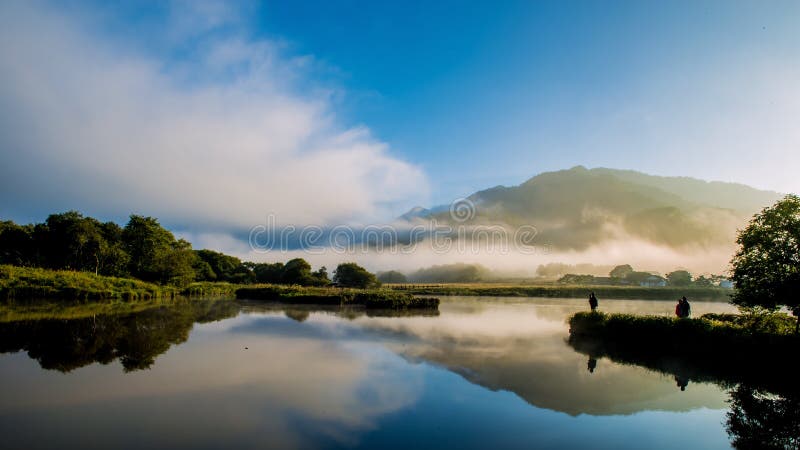
Shennongjia.
The area is also linked to Wang Zhaojun, one of China’s Four Great Beauties. Her story of love and sacrifice resonates with visitors, adding a romantic dimension to Shennongjia’s historical narrative. The intertwining of these figures and the natural beauty of the landscape create a rich tapestry of history that travelers can explore.
Natural Wonders and Mystical Riddles
Shennongjia is renowned for its breathtaking natural scenery, encompassing lush forests, majestic mountains, and crystal-clear lakes. The region’s unique geological formations, such as the Ancient Reevesia Pubescens, contribute to its allure. Visitors can embark on scenic hikes through the Shennongding National Nature Reserve, where they might encounter the famous golden snub-nosed monkeys, further enriching their experience with the area’s wildlife.
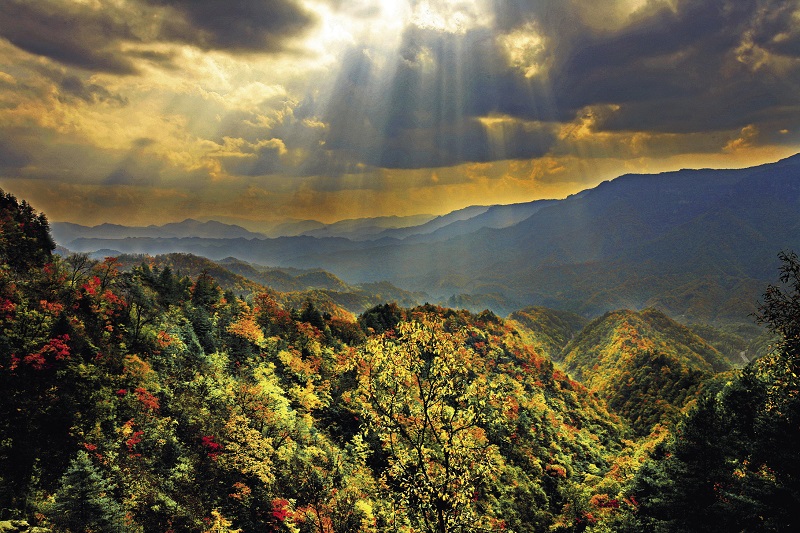
Shennongjia.
The enchanting landscape is often described as a “natural riddle,” inviting exploration and contemplation. The serenity of the environment, combined with its mythological undertones, makes Shennongjia a haven for those seeking both adventure and reflection.
Conclusion
Shennongjia is a captivating blend of rich history, legendary tales, and stunning natural beauty. Whether you are drawn by the allure of ancient myths, the intrigue of historical figures, or the breathtaking landscapes, this unique destination offers an unforgettable journey into the heart of Chinese culture. As you explore its trails and sites, remember that every corner of Shennongjia holds a story waiting to be told—a legacy that continues to inspire and enchant all who visit.
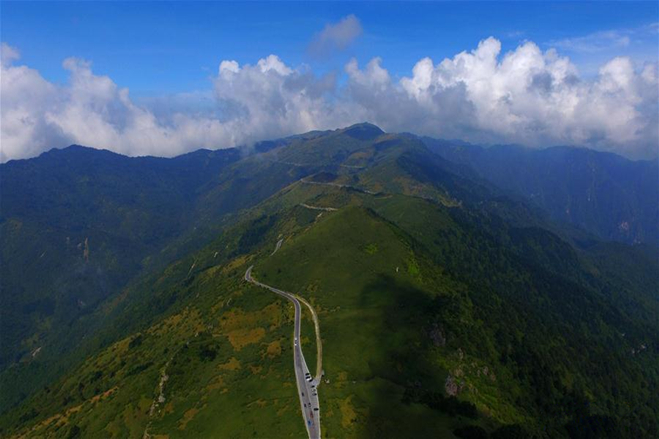
Shennongjia.
Main Highlights: What You Absolutely Can’t Miss
Discover the Wonders of Shennongjia: A Must-Visit Destination in China
Nestled in the heart of Hubei Province, Shennongjia (神农架) is a paradise for nature lovers, history enthusiasts, and adventure seekers. Known for its stunning landscapes, rich biodiversity, and deep-rooted cultural significance, this region offers a wealth of experiences that are sure to leave a lasting impression. Here are the main highlights you absolutely cannot miss during your visit to Shennongjia.
1. Shennongding National Nature Reserve
As the crown jewel of Shennongjia, the Shennongding National Nature Reserve is a UNESCO World Heritage site, famed for its breathtaking vistas and diverse wildlife. Towering peaks, lush forests, and the chance to spot the rare golden snub-nosed monkeys make this reserve a top destination. Hiking enthusiasts will relish the trails that lead to Shennongding, the highest peak at over 3,100 meters (10,170 feet). On clear days, the panoramic views are nothing short of spectacular.
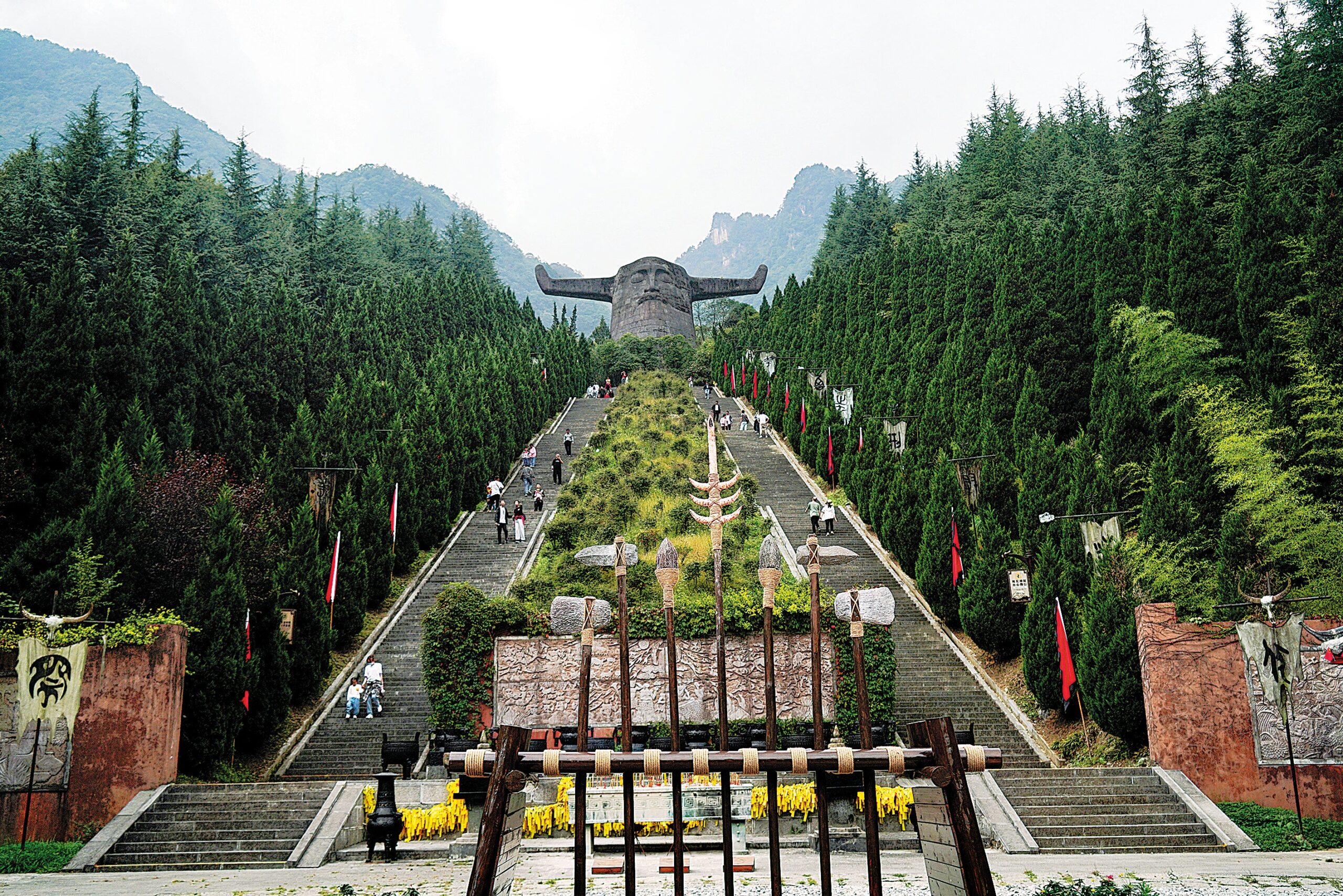
Shennongjia.
2. Shennong Altar
A site of historical and cultural significance, the Shennong Altar is dedicated to Shennong, the legendary Emperor known as the “Divine Farmer.” This altar is an important pilgrimage site and offers insight into ancient Chinese agricultural practices and beliefs. Visitors can explore the intricately designed structures and learn about Shennong’s contributions to medicine and agriculture, all while enjoying the serene surroundings.
3. Tianyan Tourism Area
For those looking to immerse themselves in the natural beauty of Shennongjia, the Tianyan Tourism Area is a must-visit. This area features stunning rock formations, lush greenery, and picturesque walking paths. It’s a great spot for photography, with unique geological features and vibrant flora that create a magical atmosphere.
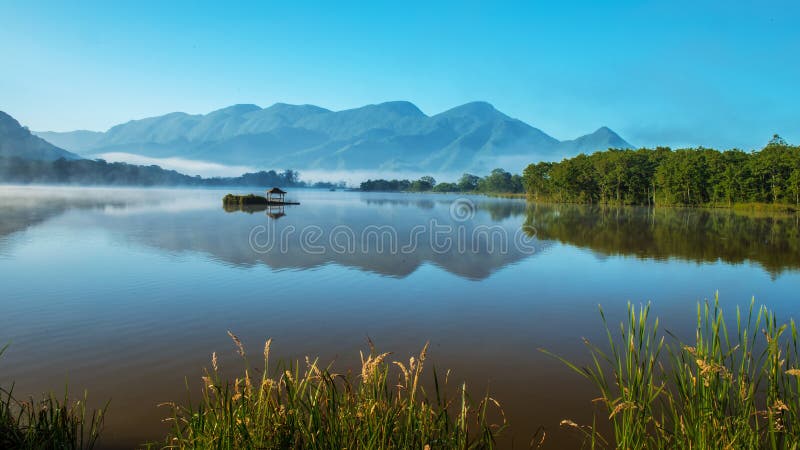
Shennongjia.
4. Hongping Hualang
Often described as one of the most beautiful spots in Shennongjia, Hongping Hualang offers scenic views that seem almost surreal. Here, guests can wander through lush valleys and take photographs of the stunning landscapes that have inspired poets and artists throughout history.
5. Wushan Lake
A tranquil oasis, Wushan Lake is perfect for those seeking a peaceful retreat. Surrounded by mountains and dense forests, this serene body of water is ideal for picnicking, leisurely walks, or simply soaking in the natural beauty. The reflections of the surrounding landscape in the lake’s still waters provide a perfect backdrop for photography.
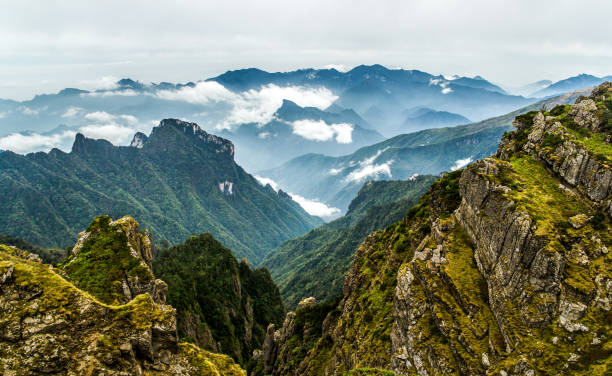
Shennongjia.
6. The Legend of the Wild Man
Shennongjia is often referred to as the “Home of the Wild Man,” a creature said to roam the area. Inspired by local folklore and sightings, the legend adds an intriguing layer to the experience of visiting Shennongjia. Explore the myths and stories surrounding this legendary being while you trek through the pristine wilderness.
7. Flying Monkey Waterfall
After a day of hiking, the Flying Monkey Waterfall is an excellent spot to cool off and relax. Named for the playful monkeys that inhabit the area, the waterfall cascades down rocky cliffs, creating a serene and picturesque setting. The hike to the waterfall is moderately challenging, but the reward is worth every step.
8. Ancient Reevesia Pubescens
For the botanically inclined, the Ancient Reevesia Pubescens is a remarkable sight. This rare tree, known for its large leaves and unique characteristics, is found in the region and provides insight into the area’s biodiversity. Witnessing such natural wonders can deepen your appreciation for Shennongjia’s ecological significance.

Shennongjia.
Practical Tips for Your Visit
- Best Time to Visit: Spring and autumn offer mild weather and vibrant foliage, making them ideal seasons for exploration.
- What to Wear: Comfortable hiking shoes and weather-appropriate clothing are essential, especially as you will encounter varying elevations and temperatures.
- Transportation: Consider hiring a local driver or joining a guided tour to ensure you can cover all the highlights without hassle.
Shennongjia is more than just a travel destination; it’s a journey through history, culture, and nature. With its stunning landscapes and rich heritage, this hidden gem of China is an unforgettable experience waiting to be discovered.
Planning Your Visit: A Practical Guide
Essential Information for Your Shennongjia Adventure
Nestled in the heart of Hubei Province, Shennongjia is an enchanting destination that beckons travelers with its stunning landscapes, rich biodiversity, and deep cultural heritage. Here’s everything you need to know to plan your visit to this unique region.
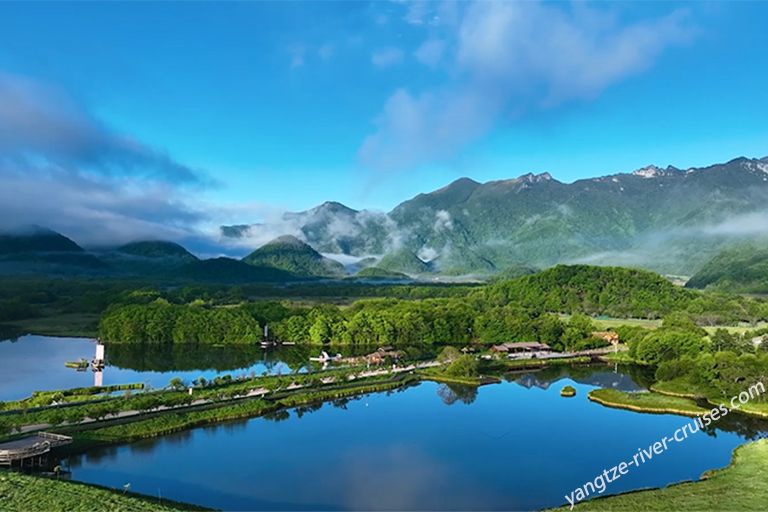
Shennongjia.
Best Time to Visit
Shennongjia boasts a temperate climate, making it a year-round destination. However, the best time to visit is during the spring (April to June) and autumn (September to November) months. These seasons offer pleasant weather for hiking and outdoor activities, along with vibrant foliage that enhances the region’s natural beauty.
Getting There
- By Air: The nearest airport is Shennongjia Hongping Airport (HPG), which is about 40 kilometers from the main attractions. Regular flights connect HPG with major cities like Wuhan and Yichang.
- By Train: If you prefer train travel, take a train to Yichang or Wuhan, and then hire a taxi or shuttle to reach Shennongjia. Yichang is approximately four hours away by car.
- By Car: Renting a car offers the flexibility to explore the area at your own pace. The roads leading to Shennongjia are well-maintained, but be prepared for some winding mountain roads.

Shennongjia.
Where to Stay
Accommodations in Shennongjia range from budget-friendly hostels to luxurious hotels. Consider staying in:
- Shennongjia Hongping Hotel: A comfortable choice with modern amenities.
- Crowne Plaza Shennongjia: Offers upscale facilities and stunning views of the surrounding nature.
- Local Guesthouses: For a more authentic experience, opt for a local guesthouse that provides a glimpse into the region’s culture and hospitality.
Transportation Within the Park
Once in the park, transportation options include:
- Private Car Hire: Highly recommended for convenience and flexibility.
- Local Tours: Many tour operators offer guided excursions that include transportation to and from key attractions.
- Public Buses: Limited public transport is available, but it may not reach all tourist spots efficiently.
Top Attractions
-
Shennongding National Nature Reserve: Home to diverse wildlife, including the elusive golden snub-nosed monkeys. Hiking trails offer breathtaking views and opportunities for wildlife observation.
-
Shennong Altar: A historic site dedicated to Emperor Shennong, known as the father of agriculture in Chinese history. The altar offers insight into ancient Chinese rituals and beautiful mountain scenery.
-
Flying Monkey Waterfall: A picturesque waterfall accessible via a scenic hike. The journey features stunning landscapes, perfect for photography enthusiasts.
-
Tianyan Tourism Area: This area showcases a mix of natural beauty and cultural significance, with walking paths that lead through lush forests and historic sites.
-
Wushan Lake: A serene spot for boating and picnicking, surrounded by lush mountains and clear waters.
Dining Options
Shennongjia offers a variety of dining experiences:
- Local Cuisine: Don’t miss out on trying local delicacies like wild mushrooms, mountain chicken, and various herbal dishes.
- Restaurants: Many hotels have in-house restaurants serving both local and international dishes.
- Street Food: For a more authentic experience, explore street vendors offering snacks and traditional meals.
Health and Safety Tips
- Altitude Considerations: Parts of Shennongjia are at high altitudes. If you’re not accustomed to such elevations, take it slow to acclimate.
- Stay Hydrated: Bring enough water, especially if you plan to hike.
- Wildlife Precautions: Respect wildlife and maintain a safe distance. Do not feed animals.
Cultural Etiquette
- Respect Local Customs: Be mindful of local traditions, especially when visiting cultural sites.
- Photography: Always ask for permission before photographing locals, especially in rural areas.
Packing Essentials
- Hiking Gear: Comfortable shoes, lightweight clothing, and a sturdy backpack are must-haves for exploring the trails.
- Weather Preparedness: Bring layers, as temperatures can vary significantly, especially in the mountains.
- Camera: Capture the breathtaking landscapes and unique wildlife.
Conclusion
Shennongjia is a treasure trove of natural wonders and cultural history, making it a must-visit destination for international travelers interested in China’s rich heritage. With this guide in hand, you are well-equipped to embark on an unforgettable adventure in this stunning region.
Tickets: Prices, Booking, and Tips
When planning your visit to Shennongjia (神农架), it’s essential to have all the ticketing details at your fingertips. This stunning natural reserve, rich in biodiversity and steeped in Chinese folklore, offers an array of experiences for both adventure seekers and cultural enthusiasts. Here’s what you need to know about ticket prices, booking options, and some helpful tips to enhance your visit.
Ticket Prices
- General Admission: The entrance fee to Shennongjia Scenic Area is approximately ¥80 (around $12 USD) per person. This ticket grants access to various attractions within the park.
- Discounts: Reduced ticket prices are often available for students, seniors, and children. Make sure to bring appropriate identification to claim these discounts.
- Seasonal Variations: Prices may vary slightly during peak tourist seasons (typically from April to October), so it’s wise to check closer to your travel date.
Booking Your Tickets
- Online Booking: Tickets can be conveniently purchased online through platforms like Trip.com or through local tour operators. Many travelers prefer this method to avoid long queues at the entrance.
- On-site Purchase: If you prefer to buy tickets upon arrival, Shennongjia has ticket booths at the main entrances. However, during peak times, it’s advisable to arrive early to secure your tickets and avoid crowds.
- Guided Tours: For those looking to delve deeper into the area’s history and ecology, consider booking a guided tour. These often include transportation, which can be particularly helpful given Shennongjia’s expansive layout.
Tips for Your Visit
- Timing Your Visit: The best time to explore Shennongjia is during the spring and autumn months when the weather is mild and the scenery is breathtaking. Early morning visits are ideal for avoiding the crowds and enjoying serene landscapes.
- Getting Around: The park is vast, and many attractions require a bit of walking or hiking. Renting a car or hiring a local driver can enhance your experience, ensuring you see the highlights without exhausting yourself.
- Dress Appropriately: Due to the varying elevations, temperatures can fluctuate significantly. Dress in layers and wear comfortable hiking shoes.
- Wildlife Watching: Be on the lookout for the famous golden snub-nosed monkeys; they are one of the park’s highlights. Visiting during early hours increases your chances of spotting them.
- Stay Hydrated and Snack Ready: Carry water and some snacks, especially if you plan to hike. There are limited facilities within the park.
By preparing ahead and understanding the ticketing process, you can fully immerse yourself in the beauty and history of Shennongjia. Whether you’re hiking through lush forests, exploring ancient sites, or observing unique wildlife, this remarkable destination promises an unforgettable experience.
How to Get There: A Complete Transportation Guide
Getting to Shennongjia: Your Comprehensive Transportation Guide
Nestled in the heart of Hubei Province, Shennongjia (神农架林区) is a captivating destination that offers a blend of stunning natural beauty and rich cultural history. However, reaching this hidden gem requires some planning. Here’s a detailed guide to help you navigate your way to this enchanting locale.
By Air: The Nearest Airports
The closest airport to Shennongjia is Shennongjia Hongping Airport (HPG), located about 30 kilometers from the scenic area. While this airport has limited flight options, it provides a convenient entry point for visitors.
Alternatively, you can fly into Yichang Sanxia Airport (YIH), approximately 150 kilometers away. This airport has more domestic flight connections, making it a viable option for international travelers.
Air Travel Tips:
– Check for direct flights to Hongping or connecting flights to Yichang.
– Book your tickets in advance, especially during peak tourist seasons.
By Train: A Scenic Ride
If you prefer an immersive travel experience, consider taking a train to Yichang. The city is well-connected via high-speed rail from major cities such as Beijing, Shanghai, and Wuhan.
Once in Yichang, you can continue your journey to Shennongjia by road.
Train Travel Tips:
– Book your train tickets online or at the station ahead of time to secure your seat.
– The journey from Wuhan to Yichang takes about 3 hours on a high-speed train.
By Bus: Direct Routes to Shennongjia
From Yichang, you can catch a bus to Shennongjia. The bus journey takes around 3 to 4 hours, offering scenic views of the countryside along the way. Buses to Shennongjia depart from the Yichang Long-distance Bus Station.
Bus Travel Tips:
– Buses run regularly throughout the day, but it’s wise to check the schedule in advance.
– Arrive early to ensure you get a seat, especially on weekends and holidays.
By Car: Self-Driving Adventure
For those who enjoy the freedom of a road trip, renting a car can be an excellent option. The drive from Yichang to Shennongjia offers breathtaking views and the opportunity to explore the region at your own pace.
Driving Directions:
– From Yichang, take National Route 318, which leads directly to Shennongjia.
– Ensure your GPS is updated, as some routes may not be well-marked.
Car Rental Tips:
– Make arrangements in advance, particularly during the high tourist season.
– Be prepared for winding mountain roads and varying weather conditions.
Getting Around in Shennongjia
Once you arrive in Shennongjia, the best way to explore is by private car or guided tour due to the vastness of the area and the limited public transportation options. Many attractions, such as the Shennongding National Nature Reserve and the Shennong Altar, are spread out, and having a vehicle will enhance your experience.
Local Transportation Tips:
– Consider hiring a local driver or joining a guided tour for a hassle-free experience.
– Wear comfortable shoes and be prepared for some hiking, as many attractions require a bit of walking.
Final Thoughts
Shennongjia is a treasure trove of natural wonders and cultural significance, and getting there is part of the adventure. Whether you choose to fly, take a train, or embark on a scenic road trip, each mode of transportation offers its own unique experience. Plan ahead, and prepare to immerse yourself in the breathtaking landscapes and rich history that await you in Shennongjia. Happy travels!
Local Cuisine and Accommodation Nearby
When exploring the enchanting landscapes of Shennongjia, a journey through its local cuisine and nearby accommodations adds depth and flavor to your cultural experience. Here’s a guide to savoring the region’s culinary delights and finding a comfortable place to rest your head after a day of adventure.
Indulging in Local Cuisine
Shennongjia’s local cuisine is a delightful blend of Hubei flavors, characterized by fresh ingredients and traditional cooking methods. Here are some must-try dishes:
-
Wild Mushroom Hotpot (野生蘑菇火锅): With the region’s diverse flora, wild mushrooms are abundant. Enjoy a steaming hotpot loaded with various mushrooms, fresh vegetables, and local meats, perfect for sharing with friends.
-
Steamed Fish from Wushan Lake (巫山鱼): The freshwater fish from the nearby lake is renowned for its freshness. Typically steamed with ginger and scallions, this dish highlights the natural flavors and is often served with a side of dipping sauce.
-
Bamboo Shoots (竹笋): The tender bamboo shoots harvested from the surrounding mountains are a seasonal delight, often stir-fried or included in soups, offering a crisp texture and earthy flavor.
-
Snub-Nosed Monkey Cake (金丝猴饼): A local pastry inspired by the famous golden snub-nosed monkeys, these cakes are filled with sweet red bean paste and reflect the cultural significance of the region’s wildlife.
Dining Venues
For a true taste of Shennongjia, consider these dining spots:
-
Shennongjia Restaurant (神农架饭店): A local favorite, this restaurant offers an extensive menu featuring traditional dishes made from locally sourced ingredients. The ambiance is cozy, with mountain views that enhance your dining experience.
-
Wushan Lake Fishery Restaurant (巫山湖渔餐厅): Specializing in dishes made with the freshest catch from Wushan Lake, this eatery is perfect for seafood lovers. Their signature steamed fish is a must-try.
-
Local Street Vendors: For a more casual experience, explore the street food scene. Vendors offer delicious snacks such as grilled skewers, dumplings, and local pastries, allowing you to sample a variety of traditional flavors on the go.
Comfortable Lodging Options
After indulging in the local cuisine, you’ll want a restful place to unwind. Here are a few recommended accommodations near Shennongjia:
-
Crowne Plaza Shennongjia (神农架皇冠假日酒店): This upscale hotel offers modern amenities with stunning views of the surrounding mountains. With a spa, restaurant, and easy access to local attractions, it’s perfect for travelers seeking comfort and convenience.
-
A’er Kadiya Senlin Hotel (阿尔卡迪亚森林酒店): Nestled within the lush greenery, this hotel provides a tranquil atmosphere. Guests can enjoy outdoor activities, and their restaurant serves many local dishes, making it an excellent choice for immersive experiences.
-
Shennongjia National Park Guesthouse (神农架国家公园宾馆): For those looking to stay closer to nature, this guesthouse offers basic accommodations with direct access to hiking trails and wildlife viewing. It’s ideal for adventurers wanting to explore the beauty of the park.
Final Thoughts
Shennongjia offers a unique blend of local cuisine and comfortable accommodations that enhance the travel experience. By indulging in the regional flavors and selecting the right place to stay, you’ll create unforgettable memories that reflect the rich history and vibrant culture of this remarkable area.
Frequently Asked Questions
Frequently Asked Questions About Shennongjia
1. What is Shennongjia known for?
Shennongjia is renowned for its stunning natural landscapes, rich biodiversity, and cultural significance. It is home to the Shennongding National Nature Reserve, where visitors can explore lush forests, breathtaking mountains, and unique geological formations. Additionally, it has historical importance as the legend of the “Wild Man” and is associated with iconic figures in Chinese history, such as the poet Qu Yuan and the beauty Wang Zhaojun.
2. How do I get to Shennongjia?
The most convenient way to reach Shennongjia is by road. It is approximately a four-hour drive from Yichang, which is well-connected by train and air to major cities in China. Many travelers opt for private car rentals or guided tours for ease of travel and to fully explore the surrounding attractions.
3. What are the must-see attractions in Shennongjia?
Key attractions include:
– Shennongding National Nature Reserve: A paradise for nature lovers, offering hiking trails and opportunities to see wildlife like the golden snub-nosed monkeys.
– Shennong Altar: A historical site dedicated to the ancient agricultural deity Shennong, featuring scenic views and cultural significance.
– Flying Monkey Waterfall: A picturesque waterfall that is accessible via hiking trails.
– Hongping Hualang: Known for its stunning natural scenery that provides excellent photography opportunities.
4. What is the best time to visit Shennongjia?
The ideal time to visit Shennongjia is during the spring (April to June) and autumn (September to October) when the weather is mild and the natural scenery is at its most vibrant. Summers can be hot, while winters may bring snow, especially at higher elevations.
5. Are there accommodations available in Shennongjia?
Yes, Shennongjia offers a range of accommodation options, including hotels, guesthouses, and resorts. It’s advisable to book in advance, especially during peak travel seasons, to secure your preferred lodging.
6. What should I wear while visiting Shennongjia?
Dress in layers to accommodate the varying temperatures, especially if you plan to hike in the mountains. Comfortable hiking shoes are essential, and it’s wise to bring a light jacket for cooler evenings or higher elevations.
7. Are there any local delicacies I should try?
Yes! When visiting Shennongjia, be sure to sample local dishes such as:
– Wild Mushroom Soup: A flavorful dish made with fresh, local mushrooms.
– Bamboo Shoots: Often cooked with meat or in stir-fries, these are a regional specialty.
– Freshwater Fish: Enjoy a variety of fish dishes sourced from nearby lakes and rivers.
8. Is it safe to hike in Shennongjia?
Yes, hiking in Shennongjia is generally safe, but it’s essential to stay on marked trails and be cautious of the terrain. Always inform someone of your hiking plans, carry sufficient water, and consider hiring a guide, especially if you are unfamiliar with the area.
Final Thoughts on Your Trip
As your journey through Shennongjia comes to an end, take a moment to reflect on the rich tapestry of experiences that this remarkable destination has woven into your travel narrative. Nestled in the heart of Hubei Province, Shennongjia is not just a feast for the eyes but a deep dive into the intertwined realms of nature, history, and culture.
Why Shennongjia Stands Out:
-
Breathtaking Landscapes: From the majestic Shennongding National Nature Reserve to the serene beauty of Wushan Lake, the region offers stunning scenery that changes with the seasons, inviting you to explore its lush forests, towering peaks, and cascading waterfalls.
-
Unique Wildlife Encounters: Witnessing the charming golden snub-nosed monkeys in their natural habitat is an experience that lingers long after you leave. These rare moments of connection with nature remind us of the importance of conservation and the beauty of biodiversity.
-
Cultural Heritage: Shennongjia is steeped in legend and history, being the mythical home of the “Wild Man” and the birthplace of famed poet Qu Yuan. Visiting sites like the Shennong Altar allows you to step back in time and appreciate the cultural narratives that have shaped this region.
A Few Final Tips:
-
Travel Smart: Consider pre-arranging a guided excursion to ensure you experience the best of Shennongjia’s hidden gems and iconic sites.
-
Dress Accordingly: The climate can vary significantly with altitude, so pack layers and comfortable footwear to fully enjoy your hikes and explorations.
-
Embrace the Local Flavor: Savor traditional dishes at local eateries to enrich your cultural experience and connect with the heart of Shennongjia.
As you return home, carry with you not just photos but also the stories and emotions that this enchanting place has gifted you. Shennongjia is more than just a destination; it’s an invitation to appreciate the splendor of nature, the depth of history, and the warmth of human connection. Until your next adventure, let these memories inspire your journey ahead.